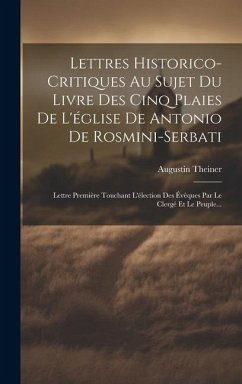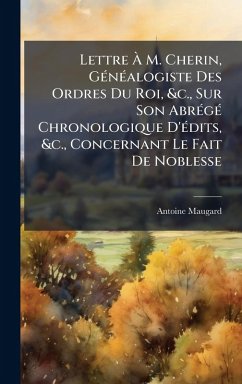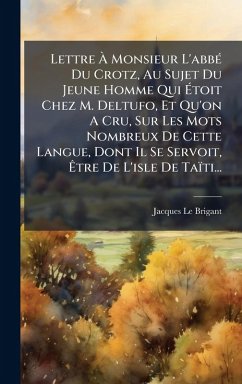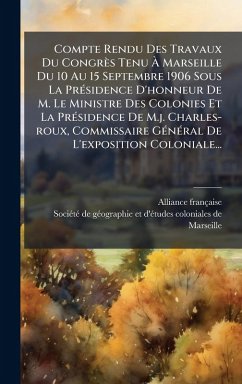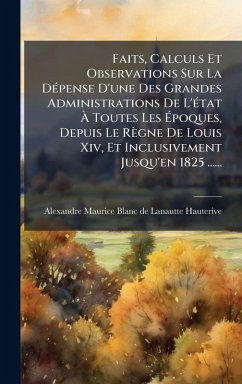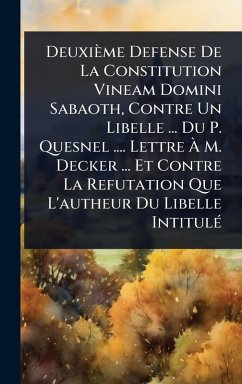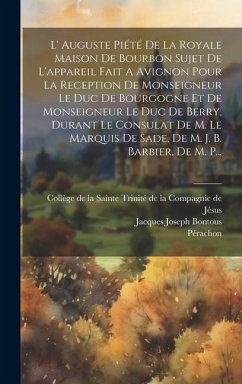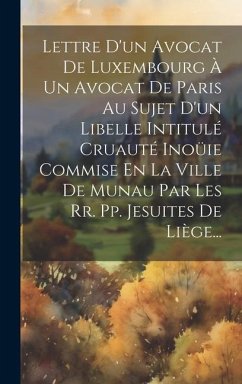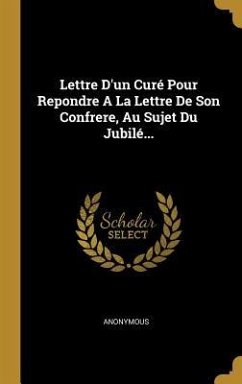
Lettre D'un BÃ(c)nÃ(c)dictin À Monseigneur L'Ã(c)vesque De Blois, Touchant Le Discernement Des Anciennes Reliques, Au Sujet D'une Dissertation De Mr Thiers, Contre La Sainte Larme De Vendôme
Versandkostenfrei!
Versandfertig in über 4 Wochen
27,99 €
inkl. MwSt.
Weitere Ausgaben:

PAYBACK Punkte
14 °P sammeln!
Lettre D'un Bénédictin À Monseigneur L'évÃaque De Blois, Touchant Le Discernement Des Anciennes Reliques, Au Sujet D'une Dissertation De Mr Thiers, Contre La Sainte Larme De Vendÿme is a historical treatise by Jean Mabillon. Written as a letter from a Benedictine monk to the Bishop of Blois, the text addresses the discernment of ancient relics, specifically responding to a dissertation by Mr. Thiers against the Holy Tear of Vendÿme. This work provides valuable insight into religious debates and practices of the time. This book will appeal to historians of Christianity, scholars of r...
Lettre D'un Bénédictin À Monseigneur L'évÃaque De Blois, Touchant Le Discernement Des Anciennes Reliques, Au Sujet D'une Dissertation De Mr Thiers, Contre La Sainte Larme De Vendÿme is a historical treatise by Jean Mabillon. Written as a letter from a Benedictine monk to the Bishop of Blois, the text addresses the discernment of ancient relics, specifically responding to a dissertation by Mr. Thiers against the Holy Tear of Vendÿme. This work provides valuable insight into religious debates and practices of the time. This book will appeal to historians of Christianity, scholars of religious relics, and readers interested in French history and theology. This work has been selected by scholars as being culturally important, and is part of the knowledge base of civilization as we know it. This work was reproduced from the original artifact, and remains as true to the original work as possible. Therefore, you will see the original copyright references, library stamps (as most of these works have been housed in our most important libraries around the world), and other notations in the work. This work is in the public domain in the United States of America, and possibly other nations. Within the United States, you may freely copy and distribute this work, as no entity (individual or corporate) has a copyright on the body of the work. As a reproduction of a historical artifact, this work may contain missing or blurred pages, poor pictures, errant marks, etc. Scholars believe, and we concur, that this work is important enough to be preserved, reproduced, and made generally available to the public. We appreciate your support of the preservation process, and thank you for being an important part of keeping this knowledge alive and relevant.



